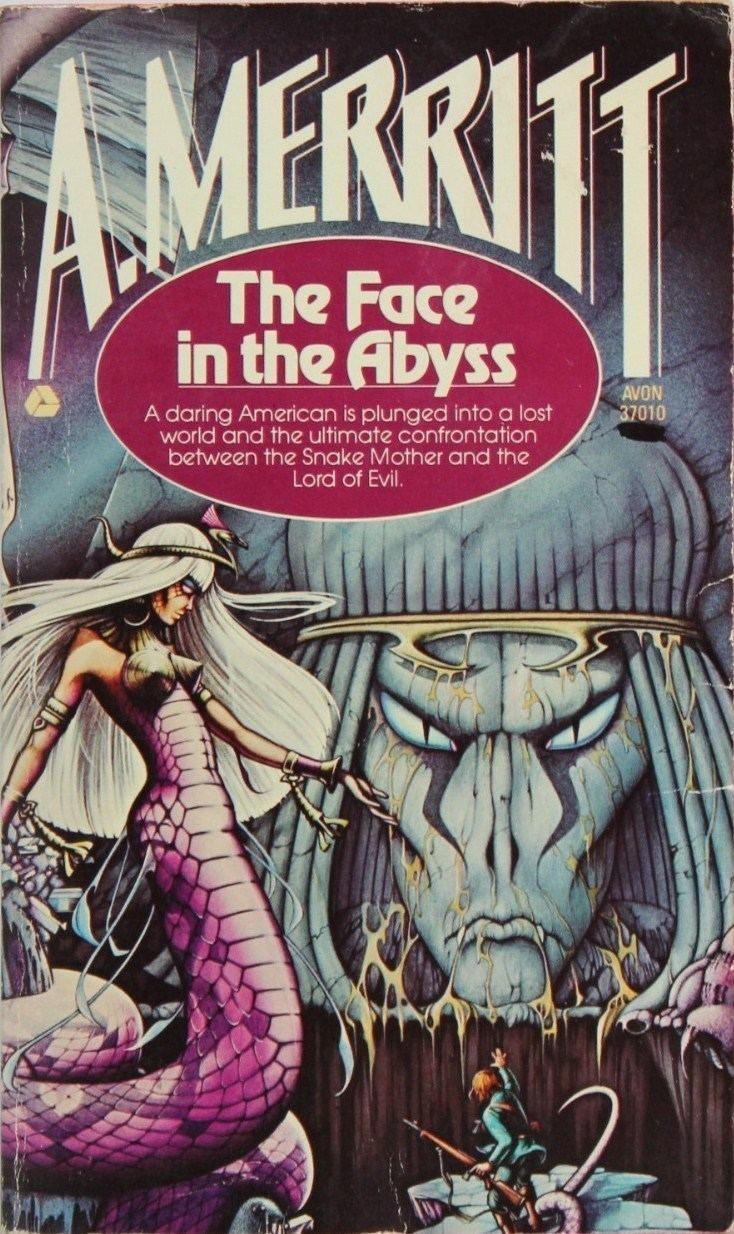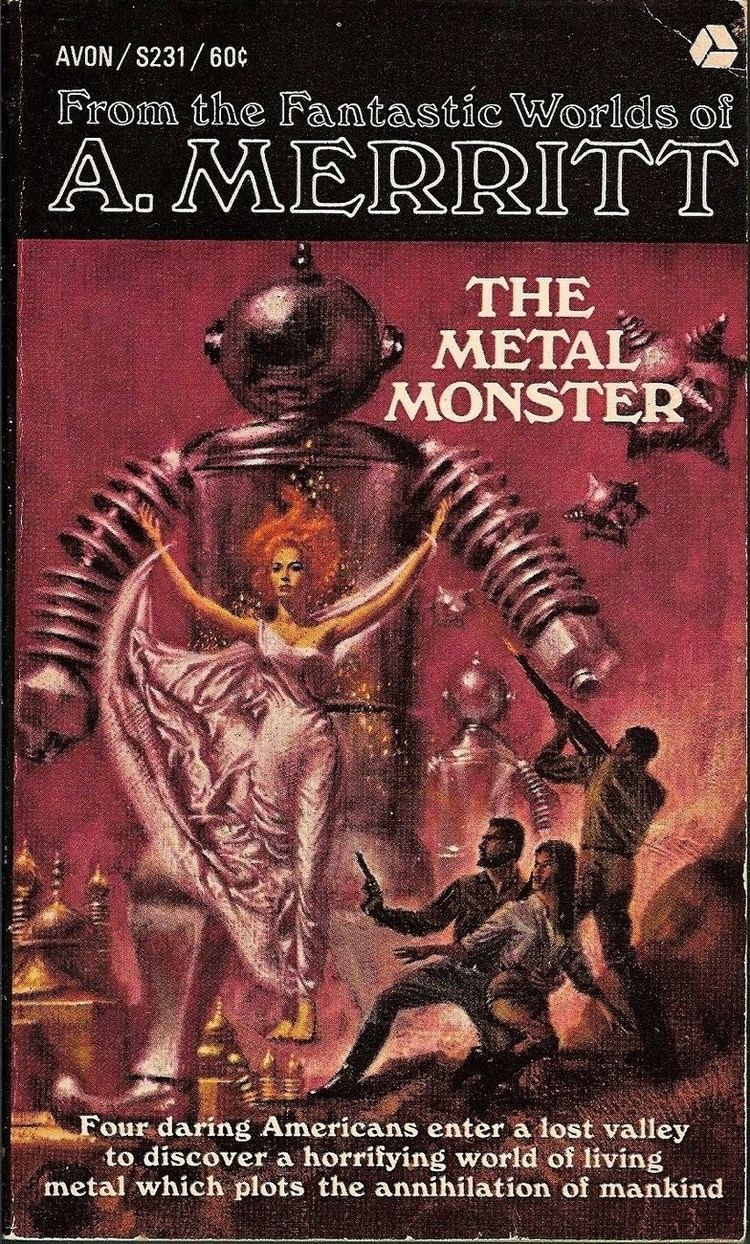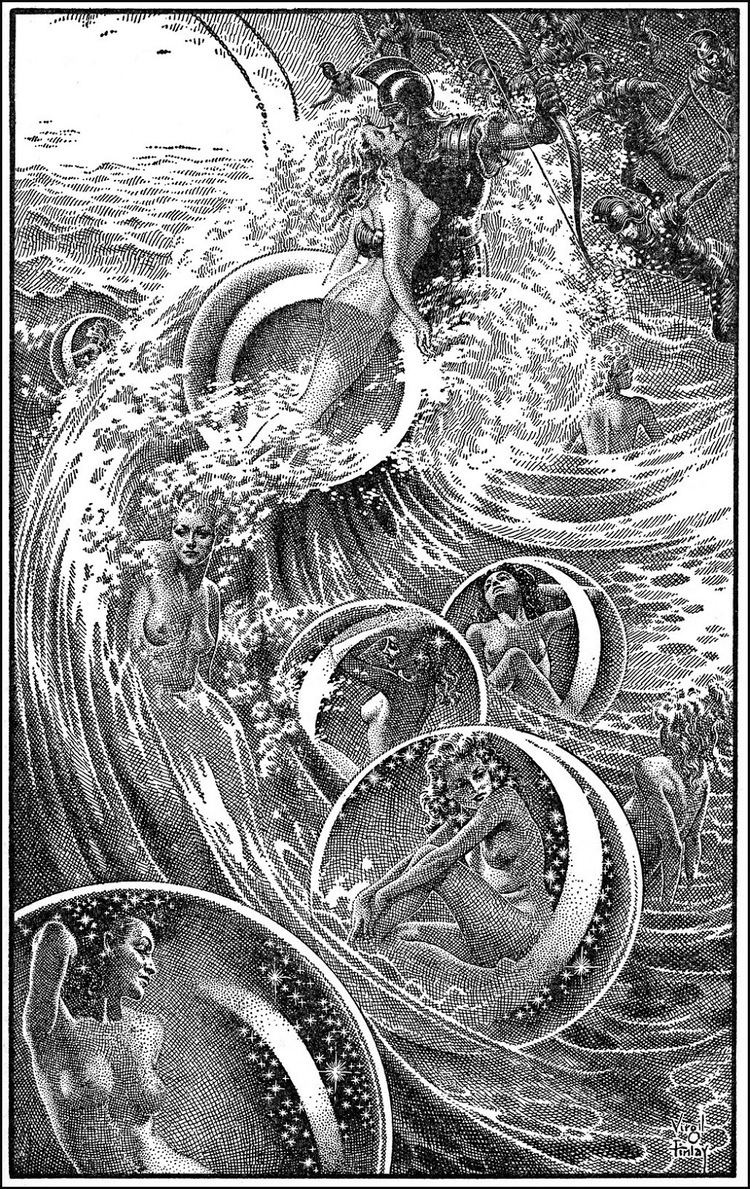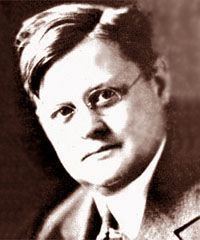Occupation Journalist, writer Period 1917–1943 (fiction) Name A. Merritt | Nationality American Subject Weekly news supplement Role Editor | |
 | ||
Born Abraham Grace MerrittJanuary 20, 1884Beverly, New Jersey, USA ( 1884-01-20 ) Pen name W. Fenimore (one 1923 story) Died August 21, 1943, Indian Rocks Beach, Florida, United States Awards Cordwainer Smith Rediscovery Award Books The Moon Pool, Burn - Witch - Burn!, The Metal Monster, The Ship of Ishtar, Dwellers in the Mirage Similar People H P Lovecraft, Hannes Bok, Robert E Howard, Edgar Rice Burroughs, Clark Ashton Smith | ||
Abraham Grace Merritt (January 20, 1884 – August 21, 1943) – known by his byline, A. Merritt – was an American Sunday magazine editor and a writer of fantastic fiction.
Contents
- Life
- Writing
- Reputation
- Novels
- Short Stories
- Short story collections
- Poems
- Collaborations
- Essays
- Adaptations
- References

The Science Fiction and Fantasy Hall of Fame inducted him in 1999, its fourth class of two deceased and two living writers.

Life

Born in Beverly, New Jersey, he moved to Philadelphia, Pennsylvania in 1894. Originally trained in law, he turned to journalism, first as a correspondent and later as editor. According to Peter Haining, Merritt survived a harrowing experience while a young reporter at the Philadelphia Inquirer about which he refused to ever speak, but would, as Haining claims, mark a turning point in Merritt's life. He was assistant editor of The American Weekly from 1912 to 1937 under Morrill Goddard, then its editor from 1937 until his death. As editor, he hired the unheralded new artists Virgil Finlay and Hannes Bok and promoted the work done on polio by Sister Elizabeth Kenny.

His fiction, eight complete novels and a number of short stories, was only a sideline to his journalism career. One of the best-paid journalists of his era, Merritt made $25,000 per year by 1919, and at the end of his life was earning $100,000 yearly—exceptional sums for the period. His financial success allowed him to pursue world travel—he invested in real estate in Jamaica and Ecuador—and exotic hobbies, like cultivating orchids and plants linked to witchcraft and magic (monkshood, wolfbane, blue datura, peyote, and cannabis).

Merritt married twice, once in the 1910s to Eleanore Ratcliffe, with whom he raised an adopted daughter, and again in the 1930s to Eleanor H. Johnson. He maintained an estate in Hollis Park Gardens on Long Island, where he accumulated collections of weapons, carvings, and primitive masks from his travels, as well as a library of occult literature that reportedly exceeded 5000 volumes. He died suddenly of a heart attack, at his winter home in Indian Rocks Beach, Florida, in 1943.
Writing
Merritt's writings were heavily influenced by H. Rider Haggard, Robert W. Chambers, Helena Blavatsky and Gertrude Barrows Bennett (writing as Francis Stevens), with Merritt having "emulated Bennett's earlier style and themes." Merritt's stories typically revolve around conventional pulp magazine themes: lost civilizations, hideous monsters, etc. His heroes are gallant Irishmen or Scandinavians, his villains treacherous Germans or Russians and his heroines often virginal, mysterious and scantily clad.
What sets Merritt apart from the typical pulp author, however, is his lush, florid prose style and his exhaustive, at times exhausting, penchant for adjective-laden detail. Merritt's fondness for micro-description nicely complements the pointillistic style of Bok's illustrations.
Merritt's first fantasy story was published in 1917, "Through the Dragon Glass" in the November 14 issue of Frank Munsey's All-Story Weekly. Other short stories and serial novels followed in the Munsey magazines All-Story, Argosy All-Story, and Argosy: The People of the Pit (1918), "The Moon Pool" (1918), The Conquest of the Moon Pool (1919), "Three Lines of Old French" (1919), The Metal Monster (1920), The Face in the Abyss (1923), The Ship of Ishtar (1924), Seven Footprints to Satan (1927), The Snake Mother (1930), Burn Witch Burn! (1932), Dwellers in the Mirage (1932), and Creep, Shadow! (1934). Meanwhile, rather few of his stories appeared elsewhere: The Pool of the Stone God (in his own American Weekly, 1923), The Woman of the Wood (Weird Tales, 1926), The Metal Emperor (Science and Invention, 1927), and The Drone Man (Fantasy Magazine, 1934).
Merritt also contributed to the round robin story The Challenge from Beyond with Lovecraft, Robert E. Howard, C. L. Moore, and Frank Belknap Long.
The Fox Woman and the Blue Pagoda (1946) combined an unfinished story with a conclusion written by Merritt's friend Hannes Bok. The Fox Woman and Other Stories (1949) collected the same fragment, minus Bok's conclusion, with Merritt's short stories. The book The Black Wheel was published in 1948, after Merritt's death; it was written by Bok using previously unpublished material as well. Both these books were also illustrated by Bok and published by the small press The New Collectors Group in hardcover.
After Merritt's death, Sam Moskowitz discovered a number of poems among his papers. Though some may have been written by other authors, they were credited to Merritt when published.
Reputation
Merritt was a major influence on H. P. Lovecraft and Richard Shaver, and highly esteemed by his friend and frequent collaborator Hannes Bok, by then a noted SF illustrator. Karl Edward Wagner included Burn Witch Burn on his list of "The Thirteen Best Supernatural Horror Novels" in the May 1983 issue of The Twilight Zone Magazine. Michael Moorcock and James Cawthorn list The Ship of Ishtar and Dwellers in the Mirage as two of the novels in their book Fantasy:the 100 Best Books, describing the former book as Merritt "at the peak of his powers", and Merritt's work as a whole being full of "memorable images". Robert Bloch also included Burn Witch Burn on his list of favourite horror novels Gary Gygax, creator of the game Dungeons and Dragons, listed Merritt in "Appendix N" of the Dungeon Masters Guide and often noted that he was one of his favorite fantasy authors. In the Lensman series by E.E. Smith, there is a reference to the novel Dwellers in the Mirage in which the protagonist Kimball Kinnison references the book and a quotation from it "Luka—turn your wheel so I need not slay this woman!"
Novels
(The Moon Pool (1918) + Conquest of the Moon Pool (1919))
(The Face in the Abyss (1923) + The Snake Mother (1930))
Short Stories
Short story collections
Poems
Collaborations
Essays
Adaptations
Merritt's work has been adapted numerous times in film and television. These include:
